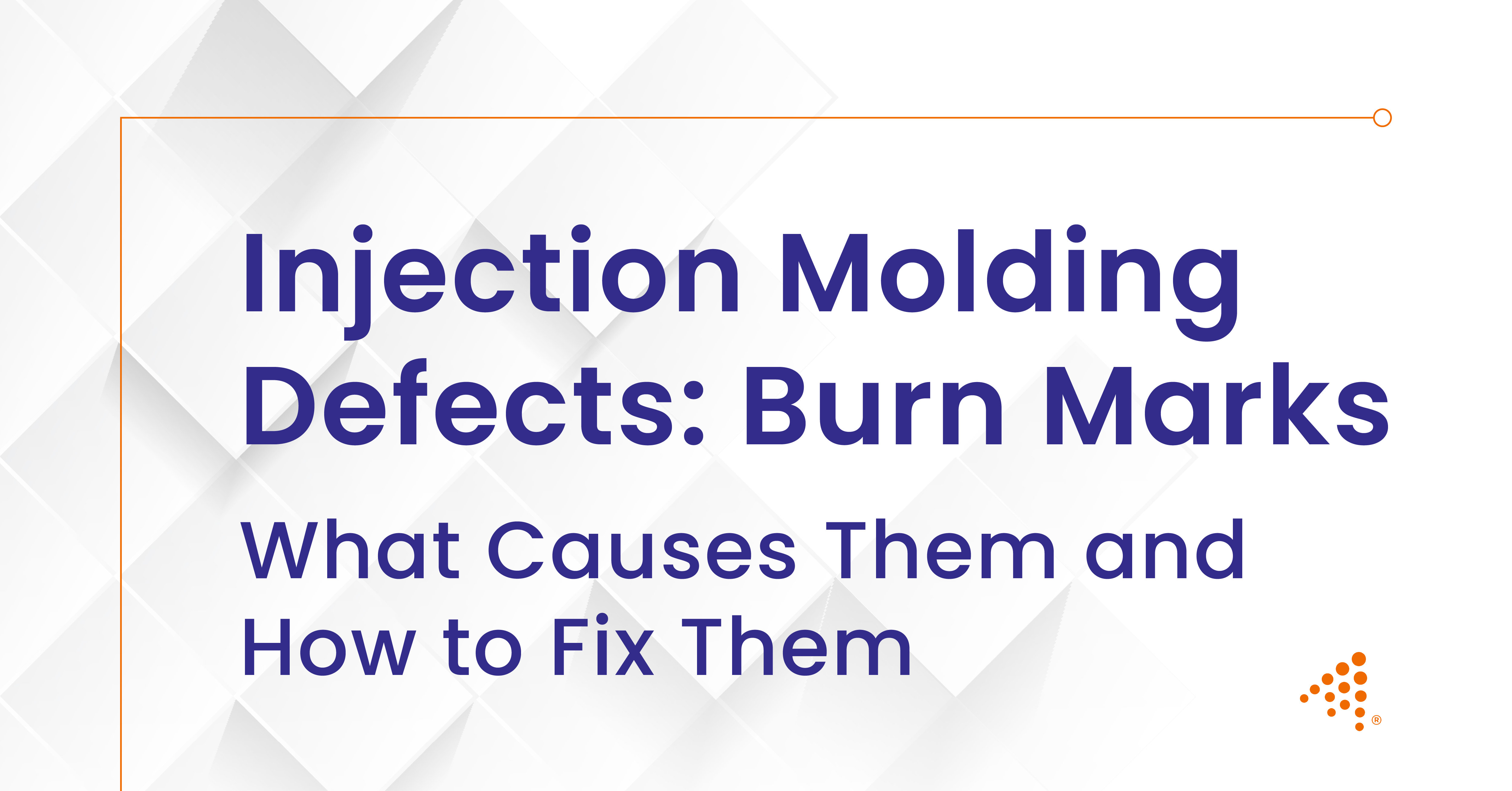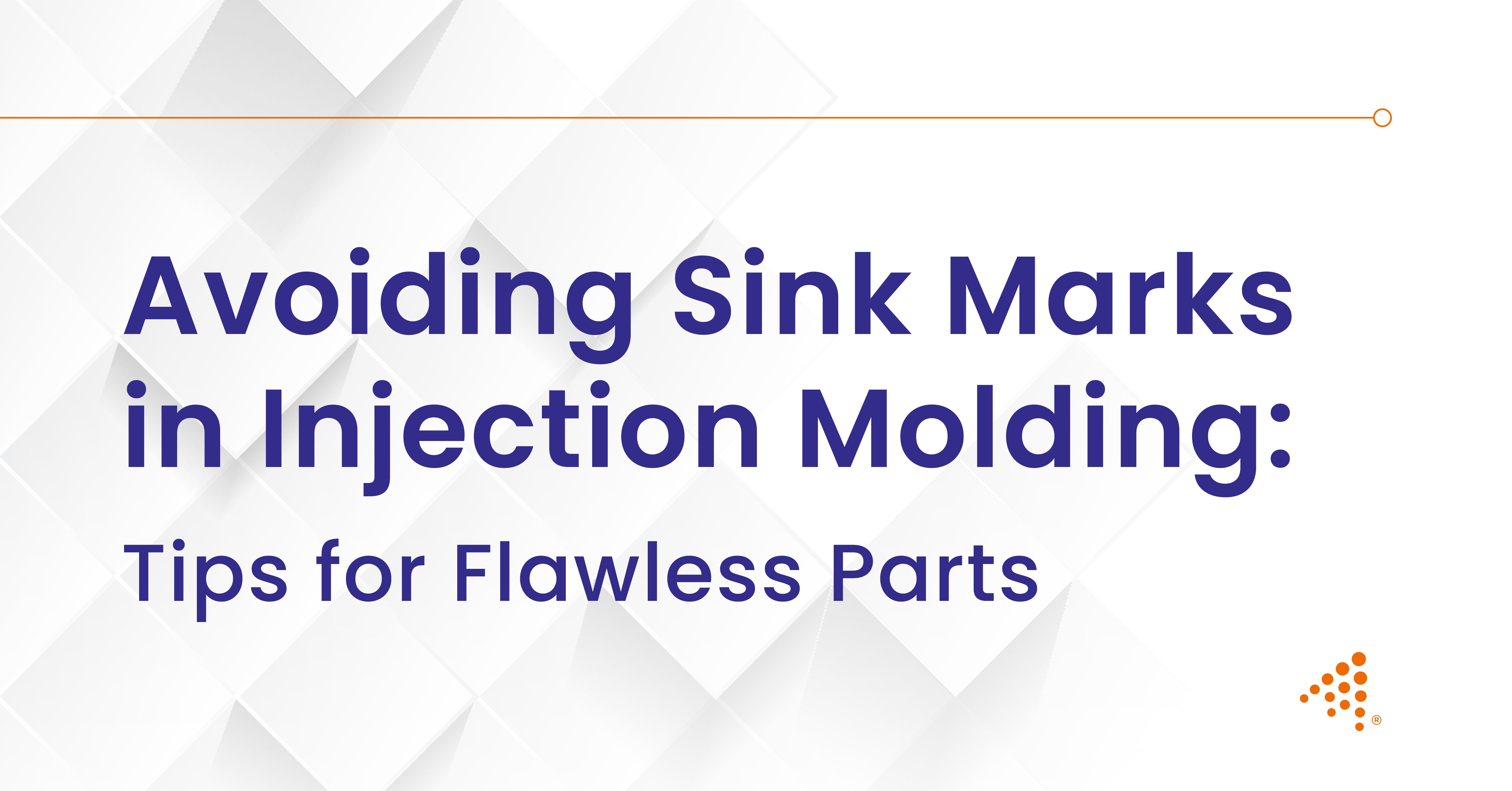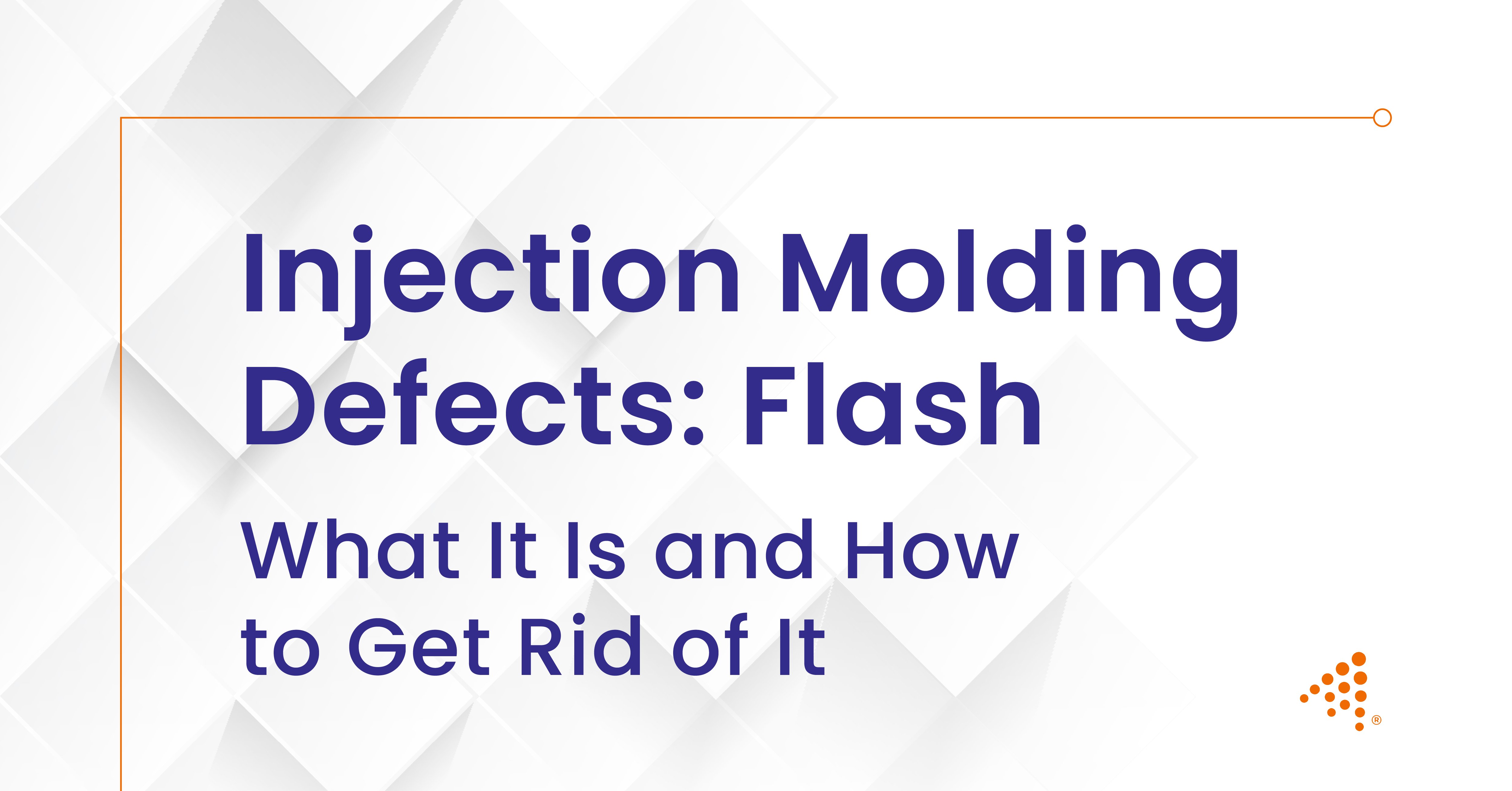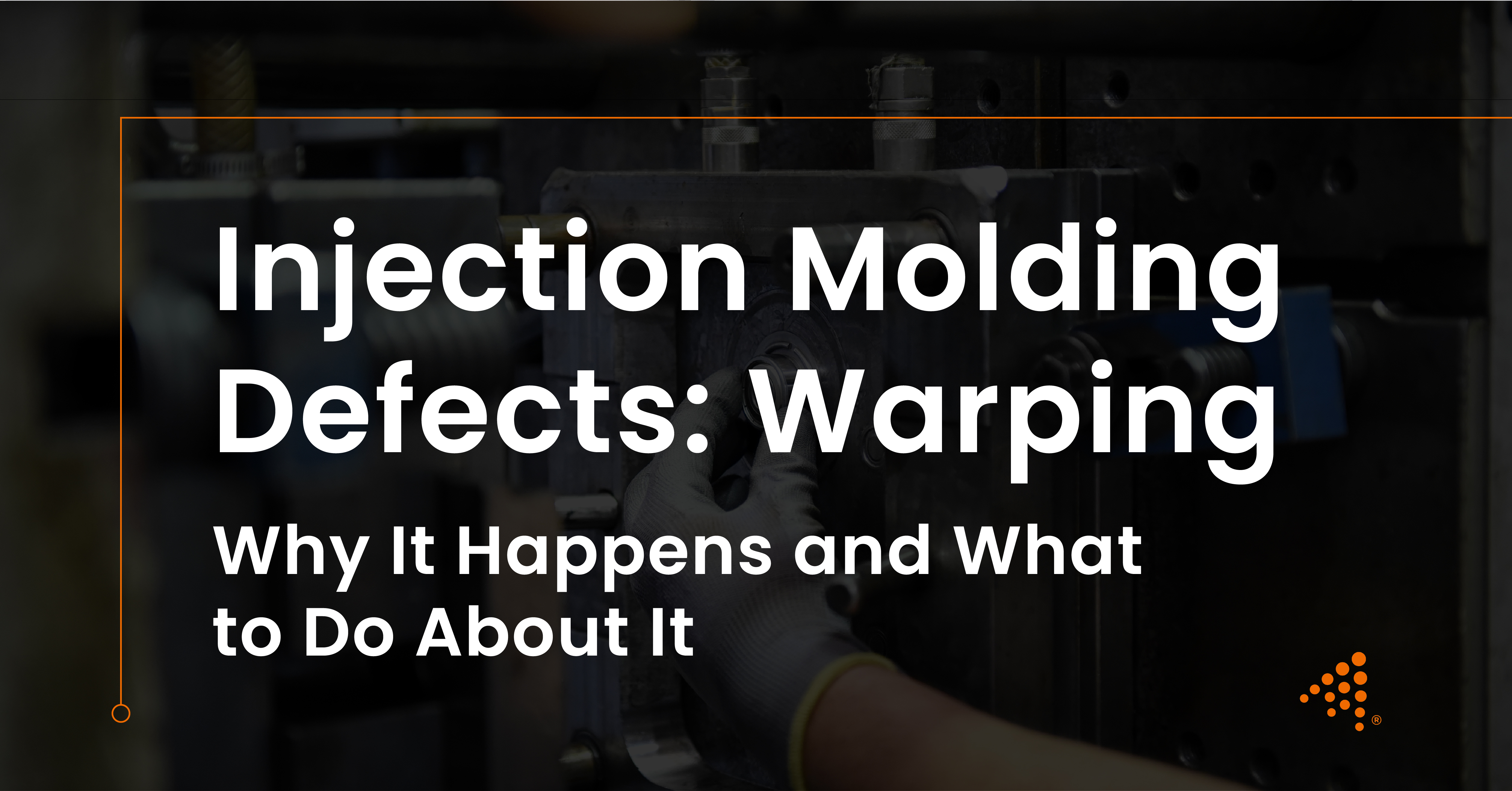Avoiding Sink Marks in Injection Molding: Tips for Flawless Parts
In high-precision injection molding, achieving a flawless surface finish is often as important as meeting tight dimensional tolerances. One of the...
5 min read
Nick Erickson : Jul 31, 2025 1:11:00 PM

In high-precision plastic injection molding, defects can range from minor cosmetic issues to significant structural flaws. One of the most common and recognizable of these imperfections is the burn mark. Often appearing as black or brown scorch marks on the surface of a finished part, these burns are more than just a surface-level blemish. They are a sign of thermal degradation of the plastic, which can compromise the part’s mechanical integrity and performance. This is a particularly serious concern in the medical device and aerospace industries where reliability is paramount. Understanding the root cause of these marks is the first step toward eliminating them. This article will explore the science behind burn marks, investigate their primary causes, and outline effective strategies for their prevention and correction.
Burn marks are discolorations, typically black, brown, or rust-colored, that appear on the surface of a molded plastic part. They are caused by the superheating and subsequent thermal degradation of the polymer material. This phenomenon most often occurs when pockets of air or gas become trapped within the mold cavity during the injection process. As the molten plastic fills the mold at high speed and pressure, these trapped gas pockets are compressed rapidly.
This rapid compression follows the principles of adiabatic heating, where the temperature of the gas increases dramatically because it has no time to dissipate the heat. The temperature can rise so high that it scorches the polymer that comes into contact with it, similar to the ignition process in a diesel engine. The resulting burn is a permanent defect that indicates not only a cosmetic flaw but also that the material at that location has been chemically altered and weakened.
Read More About Key Factors for Selecting the Best Injection Molding Tooling Supplier
The formation of burn marks is almost always linked to trapped gas, but the reason that gas becomes trapped can stem from several factors related to the mold itself, the processing parameters, or even the material. Identifying the specific cause requires a systematic approach to troubleshooting.
The most frequent cause of trapped gas is insufficient venting in the injection mold. Molds are designed with very small channels, or vents, typically along the parting line, to allow the air inside the cavity to escape as the molten plastic enters. If these vents are not properly designed or maintained, the air has no way to exit. Vents that are too small, too few in number, or located in the wrong places can all lead to gas entrapment. Over time, vents can also become clogged with residue from the molding process, rendering them ineffective. Burn marks will typically appear at the last point of fill in the cavity, where the final pocket of air gets cornered and compressed. Working with an experienced injection molding company that offers plastic injection mold design services and tooling solutions can help mitigate these issues.
The settings on the injection molding machine play a significant role in the formation of burn marks. An overly aggressive injection speed is a common trigger. When plastic is injected too quickly, the air within the cavity doesn't have enough time to escape through the vents before the plastic seals them off. Similarly, excessively high injection pressure can contribute to the rapid compression that causes burns.
The temperature of the molten plastic is another key factor. If the melt temperature is set too high, the material is already closer to its degradation point. This, combined with the heat generated from shear friction as it passes through the gate and the adiabatic heating of trapped gas, can easily push it past the scorch point. Even the screw's rotation speed and back pressure can play a part; if they are too high, they can degrade the material and create excess volatiles before the plastic is even injected into the mold. Injection molding services with robust injection molding quality control systems can help identify and correct these process-related issues.
Read More About Mold Maintenance for Long-Term Injection Molding Success
The physical design of the part and the mold can create features that inherently trap air. Complex geometries with deep ribs, sharp internal corners, or unvented blind pockets can make it difficult for air to escape. The design of the runner system and gates is also important. A poorly designed runner can create turbulent flow, which can introduce and trap air within the molten plastic stream. Gates that are too small can increase shear heat significantly, raising the material's temperature as it enters the cavity and making it more susceptible to burning.
This is where Design for Injection Molding (DfIM) and plastic part design optimization come in. Partnering with a design and manufacturing company that offers dfm services and design for manufacturing solutions ensures that your part and mold designs are optimized to minimize air traps.
Need Help with Plastic Injection Molding Challenges?
Partner with Aprios for custom injection molding solutions, plastic injection molding services, and expert tooling services tailored to your production needs.
Eliminating burn marks involves a methodical process of identifying the root cause and making targeted adjustments. The solution usually lies in one or more of three areas: improving the mold's venting, optimizing the process parameters, or modifying the tool itself.
Since inadequate venting is the most common cause, it is the first area to investigate. The solution often involves adding new vents or enlarging existing ones in the areas where burns occur. A thorough cleaning of the mold, paying special attention to existing vents, can also resolve the issue if blockage is the problem. For complex parts where traditional venting is challenging, installing vacuum vents that actively pull air from the cavity can be an effective, albeit more advanced, solution. Engaging tooling services providers or specialists in precise tooling solutions can help in implementing these fixes.
Read More About Streamlining Prototyping: The Benefits of Quick Turn Tooling
If venting is adequate, the next step is to analyze and adjust the process settings.
In some cases, the problem is inherent to the design of the mold or the part. Through a detailed Design for Manufacturing (DFM) analysis, potential air traps can be identified. Modifying the part geometry to include more generous radii in sharp corners can facilitate better airflow and prevent trapping. On the tool side, enlarging gates can reduce shear heat, and redesigning the runner system can promote a smoother, less turbulent flow of plastic into the cavity. Relocating the gate to a different position on the part can also change the filling pattern and push air toward existing vents more effectively.
Ready to improve your molding quality?
Contact Aprios for expert Design for Injection Molding (DfIM) and injection molding quality control solutions.
Burn marks in injection molded parts are a clear indicator of a problem in the manufacturing process. Addressing them is not just about improving aesthetics; it's about producing a stable, reliable part. The solution requires a comprehensive understanding of material science, mold design, and processing. By systematically evaluating the tool, the process, and the part design, manufacturers can effectively diagnose the root cause and implement lasting corrections. This dedication to process optimization and quality is fundamental to serving high-stakes industries where part performance is non-negotiable.
If burn marks are compromising the quality and appearance of your components, the team at Aprios is here to help. Our expertise in process optimization and advanced tooling allows us to diagnose and resolve these defects, ensuring your parts meet the highest standards of quality and consistency.

In high-precision injection molding, achieving a flawless surface finish is often as important as meeting tight dimensional tolerances. One of the...

In precision injection molding, the goal is always a perfect part that matches the design specifications exactly. However, various defects can arise...

Dimensional accuracy is essential in the field of precision injection molding. However, even when a part is molded to exact specifications, it can...